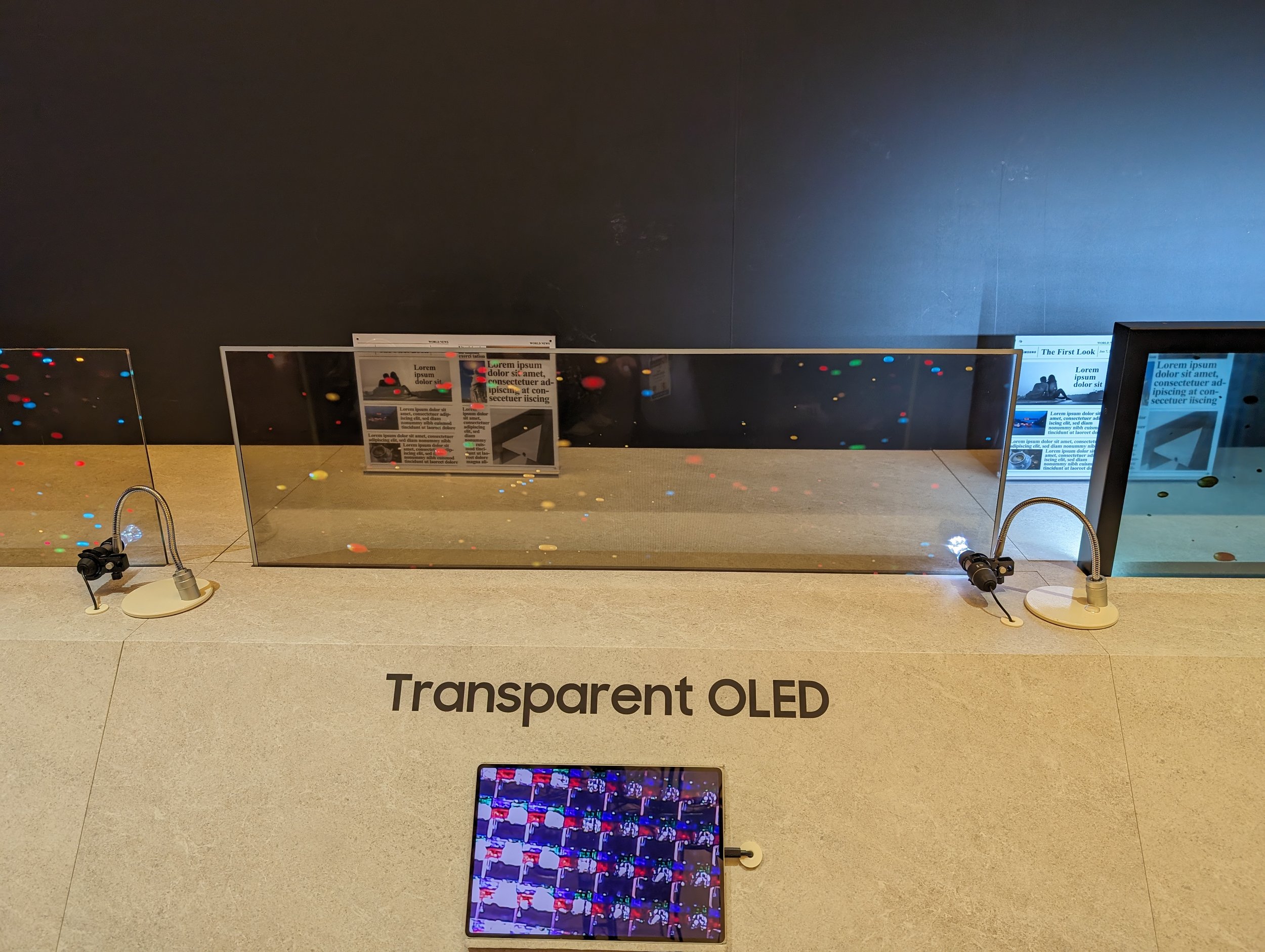CES 2024: Samsung First Look — Top Five
Samsung is launching new phones at Galaxy Unpacked next week, but it is using CES for new audio, video, and gaming announcements. Plus security, home automation, AI, and …rolling robot projector pets? Samsung shows off most of its biggest hardware announcements at First Look the night before CES Media Day, and I was there to get hands on and assess which ones are science projects, and what is going to sell like hotcakes and push competitors to respond.
#5: Samsung Ballie
Samsung’s orange version of Star Wars’ BB-8 droid is possibly the cutest product at the show, and its introductory video at Samsung’s press conference suggested that it functions essentially as a pet with a built-in projector and SmartThings access. This was first shown off as a concept in 2020, and has grown a bit since then. Is this a real product? Samsung still isn’t providing a launch date or a price. (It also wasn’t at First Look, so it should be disqualified from this list, but personal robots need to be appealing, and this one has personality in spades.)
#4: Samsung Glare Free OLED
OLED's pixels are their own light source, so the black levels they can acheive is remarkable - when a pixel is off, there is no light bleeding through like LED or miniLED sets. However, most OLEDs use highly reflective glass panels that bounce room light and images as reflections back at your eyes. While this can heighten the effect of OLED's color saturation and your brain filters out most of the reflections as you focus on the content, the absolute black levels that OLED provides is obscured somewhat. Samsung's 2024 OLED lineup uses glass with a matte finish that really makes the contrast pop without all those room light reflections. The improvement is immediately obvious.
#3: Samsung Glasses-Free 3D Gaming Monitor
Don’t worry, 3DTV is still dead. But gaming is an area where a lot of content is native 3D, and PC gamers are typically solitary and at a known seating distance. That allowed Samsung to build a glasses-free 3D monitor that uses eye tracking and lenticular filters to create real depth of field. This technology is not new; Lenovo also has a similar monitor aimed at 3D designers, and I’ve been testing a glasses-free 3D Android tablet from Leia Inc. However, for gaming, the Samsung 3D Gaming Experience (they don’t seem to have a name for this yet) provided the best demo I’ve gotten yet. When you are at the right seating distance, the 3D effect is immediate and compelling. Embers from the fire in the game I played fluttered around and in front of me. I could still clearly see ray-traced reflections in water on the ground, and the 3D depth effect felt natural, not like a layered diorama. I also found that I actually had less motion sickness – none during my short demo – than I usually get when playing first person 3D games. This is only #3 on the list for two reasons. When in 2D mode, the lenticular screen makes text less sharp; this monitor can do dual-use, but it’s compromised when used for anything other than 3D games. The other issue is that it may still be a proof of concept, not a commercial product – Samsung could not provide a price or release timeframe.
#2: Samsung Transparent MicroLED Display
This is, without question, one of the coolest things we are likely to see at the show this year. There have been transparent displays before – both LCD and OLED – and LG is productizing a version of transparent OLED for price-is-no-object interior designers later this year. However, transparent microLED is something else. When you take microLED’s extreme brightness and apply it to a dual-layer display, you get a bright three-dimensional effect that has no placement restrictions – there’s no sweet spot or limitation on number of viewers, and it looks good off-axis. Opaque microLED displays like Samsung’s The Wall are extraordinarily expensive (typically in the $100,000 - $500,000 range depending on size and installation), but if you can afford them, they make an unmatched theater experience, whether a home theater or a commercial one. For now, transparent microLED appears to be another science project, but if Samsung can commercialize it, this could find a home in corporate displays.
#1: Samsung Music Frame
At CES 2017, Samsung invented the TV-as-picture-frame segment concept with The Frame. This delighted design-centric consumers so much that it is surprising it took five years for the company to strike again with picture frame speakers. There are plenty of invisible, paintable in-wall speakers on the market, but you can’t typically cover them with artwork, or the artwork needs to be perforated to allow the sound to pass through. With Samsung’s Music Frame, the speaker elements are arrayed around the perimeter of the unit, enabling consumers to use commercial artwork or their own family photos with no perforation needed – provided that the pictures are precisely square. It was hard to assess sound quality in the noisy First Look environment, but this is not aimed at audiophiles, and Samsung was demonstrating how multiple Music Frames could be ganged together to provide surround sound. This is an obvious upsell – and replacement for a soundbar – for Samsung Frame TV customers. However, it is also a simple solution to a problem that real consumers have all around their homes: how to get audio without impacting the décor.
To discuss the implications of this report on your business, product, or investment strategies, contact Techsponential at avi@techsponential.com.
















